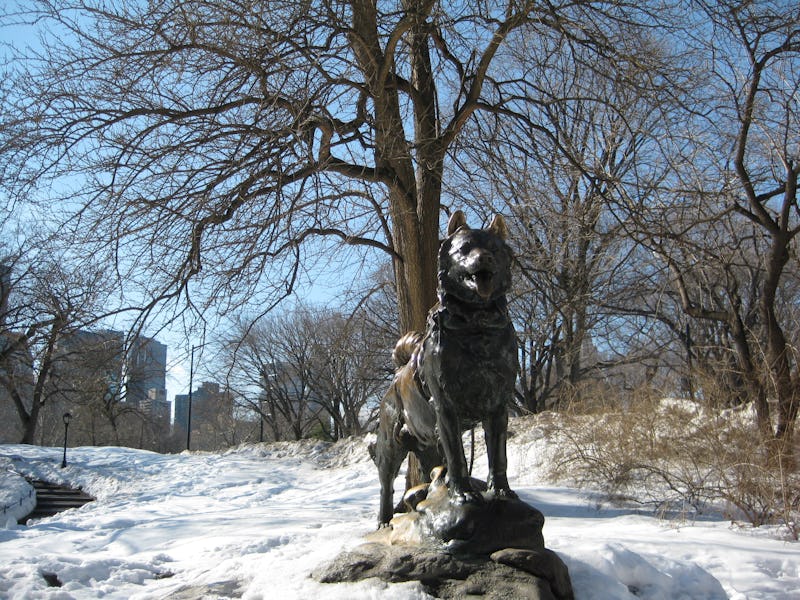The Science Behind Balto's Famous Journey That Took Place 93 Years Ago
The dog that delivered diphtheria antitoxin and saved a town.

On February 15, 1925, a dogsled team led by a Siberian husky named Balto arrived in Nome, Alaska under treacherous weather. The six-year-old dog had just delivered a second batch of diphtheria antitoxin to the town, which was in the early stages of a deadly outbreak. Nome, which to this day, 93 years later, is still only accessible by air, sea, or dogsled and snowmobile trails, was even more isolated then.
Dr. Curtis Welch, Nome’s only doctor, knew that he, his small staff of four nurses, and the Gold Rush town of about 10,000 residents were facing a potentially devastating public health crisis. Welch called for a quarantine, telegraphed other Alaskan towns to alert them, and called on the U.S. Public Health Service for help.
This help came in the form of dog-delivered diphtheria antitoxin, a substance produced by infecting horses with diphtheria, drawing their blood, and extracting the naturally-produced serum, which becomes rich in antitoxins.
The presence of the disease is still a problem today, as overcrowding in some countries leads to spreading of the highly contagious Corynebacterium diphtheriae bacterium. The World Health Organization reported in December that there were 2,500 suspected cases between Myanmar and Bangladesh as violence continued in Myanmar. It spread through settlement camps in Bangladesh of Rohingya civilians who had fled Mynamar.
Diphtheria, an infection against which children are now routinely vaccinated can cause difficulty breathing, heart failure, paralysis, and death, according to the CDC.
Two weeks before their February 15 arrival in Nome, Balto’s team had already made the trip once, enduring white-out blizzard conditions to cover the last leg of a dogsled relay that ran nearly 700 miles from Nenana in central Alaska to Nome, on the Seward Peninsula. Twenty teams and a total of more than 100 dogs took turns running up to 91 miles at a time, with the mushers — dogsled drivers — handing off the precious serum to one another. Part of their journey later became the historic Iditarod Trail, site of the annual dogsled race, which meets up with the Nome Serum Run’s path after crossing the Yukon River.
Balto led Gunnar Kaasen's dog team over the final leg of the trail from Nenana to Nome.
Balto kept the team on its path, navigating with nearly zero visibility. The husky is credited with guiding the team when musher Gunnar Kaasen couldn’t see, helping to stem the outbreak in the isolated town. This delivery of serum was barely enough, though, which is why Balto, Kaasen, and the rest of the gang made another trip 93 years ago today to deliver more serum.
This event was one of the last such dogsled relays of the era, as the coming years saw snowmobiles and airplanes render them obsolete. But Balto is still remembered. The dog was memorialized with a statue, sculpted by Frederick Roth, in Central Park in New York City. The statue was unveiled in December 1925, with Balto present at the ceremony.
The Balto statue in Central Park in New York City.
The following year wasn’t as kind to Balto, as disputes over owed wages found him and his team being sold at auction. They ended up as sideshow attractions in Los Angeles.
In 1927, though, prize-fighter-turned-businessman George Kimble purchased the team and transferred them all to the Brookside Zoo (now the Cleveland Metroparks Zoo), where they were given the heroes’ welcome they deserved.
Balto's remains at the Cleveland Museum of Natural History.
Balto died in 1933, and his taxidermied body can be seen at the Cleveland Museum of Natural History.